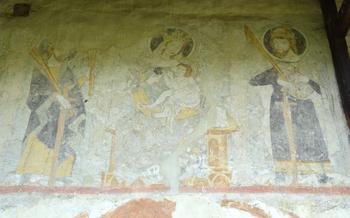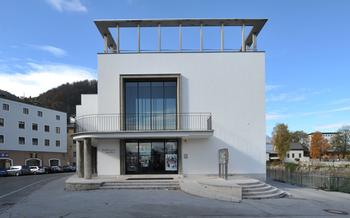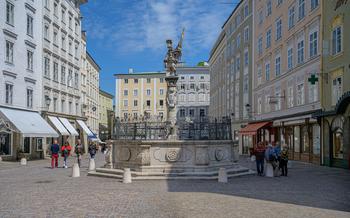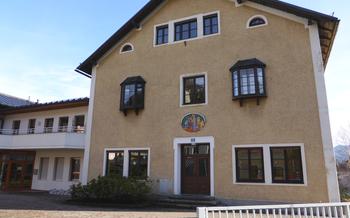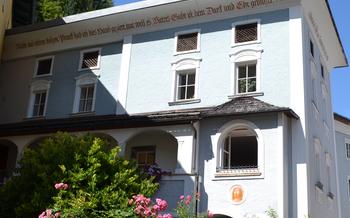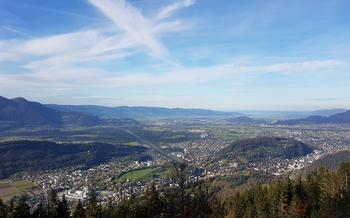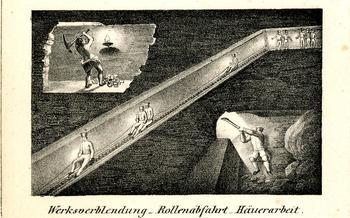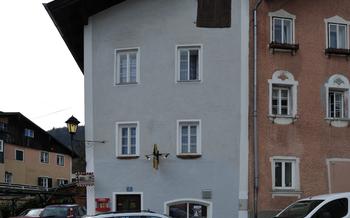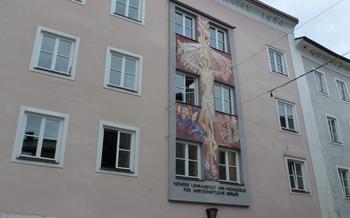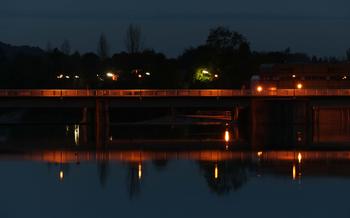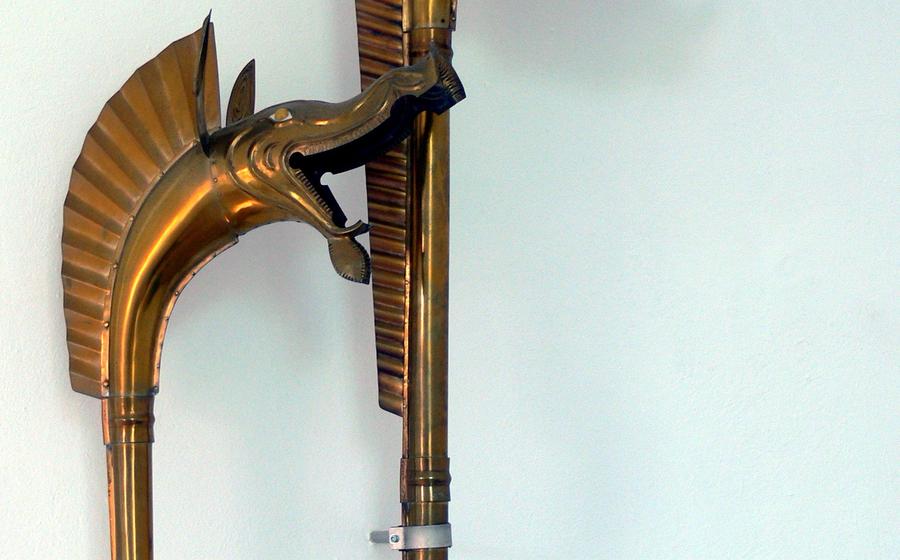
Celtic Museum Hallein (Keltenmuseum)
- Celtic Museum Hallein: A Journey into the Past
- Unveiling the Celtic Heritage of Hallein
- Highlights of the Celtic Museum Collection
- Interactive Exhibits for a Hands-On Experience
- Guided Tours to Enhance Your Visit
- Exploring Celtic Rituals and Traditions
- Celtic Art and Symbolism
- Celtic Warfare and Weapons
- Celtic Trade and Economy
- Celtic Cuisine and Food Culture
- Celtic Music and Musical Instruments
- Celtic Astronomy and Calendar
- Celtic Myths and Legends
- Celtic Legacy in Modern-Day Hallein
- Celtic Place Names
- Local Customs and Traditions
- Contemporary Art and Cultural Events
Celtic Museum Hallein: A Journey into the Past
Hallein, a picturesque town nestled in the heart of Austria, boasts a rich Celtic heritage that dates back centuries. The Celtic Museum Hallein (Keltenmuseum), a treasure trove of Celtic history and culture, invites visitors on an immersive journey into the past. Established in 1995, the museum showcases a remarkable collection of Celtic artifacts discovered in the Hallein region, offering a glimpse into the lives, traditions, and craftsmanship of this ancient civilization.
The Celtic Museum Hallein stands as a testament to the significance of Celtic culture in the region. Its collection, spanning from the 5th century BC to the 1st century AD, offers a unique perspective on the Celtic way of life. Interactive exhibits, guided tours, and educational programs bring the Celtic past to life, providing visitors with a hands-on and engaging experience.
Unveiling the Celtic Heritage of Hallein
Hallein, a charming town nestled in the heart of Austria, boasts a rich and storied Celtic past. The Celts, a group of Indo-European people, inhabited this region from the 5th century BC to the 1st century AD, leaving behind an indelible mark on Hallein's history and culture. Archaeological excavations conducted throughout the city have unearthed an array of Celtic artifacts, including finely crafted jewelry, bronze and iron tools, weapons, and pottery. These discoveries have illuminated the daily lives, customs, and beliefs of the Celtic inhabitants, providing valuable insights into their vibrant culture.
The influence of Celtic heritage is still evident in Hallein's modern-day traditions and folklore. Local legends and myths often trace their origins back to Celtic beliefs and deities, such as the tale of the "Wild Man of the Untersberg," a legendary creature believed to roam the Untersberg mountain, which overlooks Hallein. Furthermore, several local customs and festivals, such as the annual "Halleiner Perchtenlauf," a traditional carnival procession featuring masked figures, are thought to have Celtic roots. These cultural practices serve as living reminders of Hallein's deep connection to its Celtic past, showcasing the enduring legacy of this ancient civilization.
Highlights of the Celtic Museum Collection
The Celtic Museum Hallein houses an extraordinary collection of Celtic artifacts that showcases the intricate craftsmanship and artistic prowess of the ancient Celts. Among the highlights of the collection are the exquisite pieces of Celtic jewelry, which demonstrate the remarkable skills of Celtic metalworkers. Necklaces, bracelets, rings, and brooches adorned with intricate designs and semi-precious stones reveal the Celts' love for personal adornment and their belief in the protective power of jewelry.
Bronze and iron artifacts also form a significant part of the museum's collection. From finely crafted weapons to everyday tools and household items, these artifacts provide insights into the technological advancements and daily life of the Celts. The intricate designs and patterns on these objects, often incorporating Celtic symbols and motifs, highlight the Celts' artistic sensibility and their connection to the natural world.
The museum's collection also features a remarkable array of pottery, sculptures, and ritual objects. These artifacts offer glimpses into Celtic religious beliefs, funerary practices, and artistic traditions. The symbolic meanings behind Celtic artwork, such as the triskele, the spiral, and the Celtic knot, are explored in detail, providing visitors with a deeper understanding of Celtic culture and its enduring legacy.
Interactive Exhibits for a Hands-On Experience
The Celtic Museum Hallein offers a range of interactive exhibits that bring the Celtic past to life for visitors of all ages. Virtual reality tours transport visitors back in time, allowing them to experience Celtic life firsthand. Interactive touchscreens provide in-depth information on Celtic history, culture, and mythology. Children can engage with Celtic traditions through hands-on activities, such as creating their own Celtic jewelry or playing traditional Celtic games. The museum also hosts regular workshops and demonstrations, where visitors can learn about Celtic crafts, such as metalworking, weaving, and pottery. These interactive exhibits not only enhance the visitor experience but also foster a deeper understanding of Celtic culture.
Guided Tours to Enhance Your Visit
To delve deeper into the captivating world of Celtic history and culture, guided tours are an excellent option. Knowledgeable and passionate guides will lead you through the museum's exhibits, providing expert insights and anecdotes that bring the past to life. These tours are tailored to cater to diverse interests, whether you're a history buff, an art enthusiast, or simply curious about the Celtic heritage of Hallein.
Advance booking is recommended to secure your spot on a guided tour, especially during peak tourist seasons. This ensures that you have a dedicated guide who can answer your questions and provide personalized attention to your group. For a truly immersive experience, consider booking a custom tour that can be tailored to your specific interests and preferences. These tours offer a unique opportunity to explore the Celtic Museum's collection in-depth and gain a deeper understanding of Celtic life and culture.
Exploring Celtic Rituals and Traditions
The Celtic Museum Hallein provides a glimpse into the enigmatic world of Celtic religious practices and traditions. Ritualistic objects, such as ceremonial cauldrons, intricately carved figurines, and ornate jewelry, reveal the deep spiritual beliefs of the ancient Celts. Visitors can explore the symbolic meanings behind these objects and learn about the rituals associated with them.
The Celts celebrated a variety of festivals throughout the year, many of which are still observed in modern times. The most important of these was Samhain, which marked the beginning of the new year and the end of the harvest season. Samhain was a time for feasting, honoring the dead, and predicting the future. The Celtic Museum Hallein showcases artifacts and interactive exhibits that bring these ancient festivals to life.
The Druids, who were the religious leaders and scholars of Celtic society, played a crucial role in performing rituals and ceremonies. They possessed knowledge of the sacred texts, conducted divinations, and acted as intermediaries between the gods and the people. The museum sheds light on the fascinating role of the Druids and their influence on Celtic culture.
Celtic Art and Symbolism
Celtic art is renowned for its intricate designs and patterns, often featuring spirals, knots, and other symbolic motifs. These designs were not merely decorative but held deep cultural and spiritual significance. Animals, plants, and geometric shapes were often used symbolically, representing various aspects of the natural world, the cosmos, and Celtic mythology.
The Celtic knot, in particular, is a powerful symbol representing eternity, interconnectedness, and the cyclical nature of life. It has become an iconic symbol of Celtic culture and continues to inspire contemporary artists and designers.
The vibrant colors and intricate patterns of Celtic art have influenced various art forms, including jewelry, metalwork, sculpture, and illuminated manuscripts. The legacy of Celtic art can be seen in modern design elements, fashion trends, and even tattoos.
Celtic Warfare and Weapons
Celtic culture placed great importance on warfare, with skilled warriors playing a vital role in their society. The Celtic Museum Hallein showcases an impressive collection of weapons that provide insights into their military prowess. Visitors can admire a variety of swords, spears, axes, and daggers, each crafted with intricate designs and deadly efficiency. Defensive gear, such as shields and helmets, adorned with intricate Celtic patterns, protected these fierce warriors in battle.
The museum also delves into the strategies and tactics employed by the Celts in their battles. Learn about their renowned ferocity and their mastery of close-quarters combat. Discover the role of chariots in Celtic warfare and how they instilled fear in their enemies. Through interactive exhibits and detailed explanations, the Celtic Museum Hallein brings to life the fascinating world of Celtic warfare, providing a glimpse into the courage and skill of these ancient warriors.
Celtic Trade and Economy
The Celts were renowned for their extensive trade networks, which stretched across Europe and beyond. They were skilled traders and merchants, and their economy was based on a combination of agriculture, trade, and craftsmanship.
The Celts traded a wide variety of goods, including agricultural products, metalwork, jewelry, pottery, and textiles. They were also skilled in metalworking, and their bronze and iron weapons and tools were highly sought after.
Celtic coins were used as currency, and they were minted in a variety of denominations. The Celts also engaged in barter, exchanging goods and services with other peoples.
Celtic trade played an important role in the development of the European economy. The Celts introduced new goods and technologies to the regions they traded with, and they helped to spread cultural influences across Europe.
The Celtic economy was based on a strong work ethic and a sense of community. The Celts were skilled craftsmen and farmers, and they were able to produce a surplus of goods that they could trade with other peoples.
The Celtic trade networks were also important for the spread of Celtic culture. The Celts traded with a variety of different peoples, and they were able to share their customs and traditions with others.
Celtic Cuisine and Food Culture
Discovering the dietary habits of the ancient Celts: The ancient Celts had a rich and diverse food culture that was deeply connected to their environment and agricultural practices. Their diet consisted mainly of locally grown crops, such as wheat, barley, oats, and rye, which they used to make bread, porridge, and beer. Vegetables, such as cabbage, turnips, and carrots, were also an important part of their diet, as were fruits, such as apples, pears, and berries. Meat was consumed occasionally, with pork, beef, and lamb being the most common types.
Traditional Celtic dishes and their ingredients: One of the most iconic Celtic dishes is stew, which was typically made with a variety of meats, vegetables, and herbs. Another popular dish was barley bread, which was often flavored with honey or nuts. Dairy products, such as milk, cheese, and butter, were also an important part of the Celtic diet.
The importance of feasting and hospitality in Celtic society: Feasting and hospitality were central to Celtic culture. Feasts were held to celebrate important events, such as weddings, births, and victories in battle. During these feasts, guests were treated to lavish meals and entertained with music and storytelling. Hospitality was also highly valued, and visitors were always welcomed with open arms and offered food and shelter.
How Celtic cuisine has influenced modern-day Austrian cuisine: Celtic cuisine has had a significant influence on modern-day Austrian cuisine. Many traditional Austrian dishes, such as Kaiserschmarrn (a shredded pancake) and Knödel (dumplings), have their roots in Celtic cooking. The use of spices and herbs, such as garlic, parsley, and thyme, is also a legacy of the Celts.
Celtic Music and Musical Instruments
Music played an integral role in Celtic culture, serving as a means of expressing emotions, telling stories, and connecting with the divine. The Celts possessed a rich tradition of music, encompassing both vocal and instrumental performances. Their music was often characterized by its intricate melodies, rhythmic vitality, and use of traditional instruments.
Among the most iconic Celtic musical instruments was the harp, a stringed instrument with a distinctive triangular frame. The harp was highly regarded by the Celts, who believed it possessed magical properties. Skilled harpists were held in high esteem and were often invited to perform at important gatherings and ceremonies.
Other prominent Celtic instruments included the bagpipes, a wind instrument consisting of a set of pipes and a bag that provides a continuous airflow. The bagpipes were particularly associated with Scottish and Irish Celtic cultures and were often played at traditional festivals and gatherings.
Flutes, whistles, and horns were also common among the Celts. These instruments were crafted from various materials, such as wood, bone, and metal, and were used to create a variety of melodies and rhythms.
The Celts were also skilled in the art of vocal music. They had a tradition of singing in both solo and group performances, often accompanied by musical instruments. Celtic songs covered a wide range of themes, including love, loss, battle, and mythology.
The legacy of Celtic music continues to resonate in modern times. Many contemporary musicians and bands draw inspiration from Celtic traditions, incorporating Celtic melodies, rhythms, and instruments into their music. Celtic music festivals and events are held throughout the world, showcasing the rich cultural heritage of the Celts and keeping their musical traditions alive.
Celtic Astronomy and Calendar
Celts possessed a deep understanding of the cosmos and celestial events, weaving astronomy into the fabric of their culture. They believed that the movements of the stars, moon, and sun held profound significance, influencing everything from daily life to religious practices. Their calendar, known as the Coligny calendar, was a complex system based on lunar and solar cycles, reflecting their keen observation of the heavens. This calendar was used to mark important dates, such as festivals, planting seasons, and religious ceremonies. By studying the patterns of the stars, the Celts were able to predict weather conditions, track the changing seasons, and navigate long distances during their travels and trade expeditions. Their astronomical knowledge was not just an intellectual pursuit but an integral part of their way of life, shaping their rituals, beliefs, and connection to the natural world.
Celtic Myths and Legends
Celtic mythology is a captivating tapestry of tales that have been passed down through generations, capturing the imagination and weaving a rich narrative into the fabric of Celtic culture. These myths delve into the extraordinary adventures of heroes, the magical realms of gods and goddesses, and the intricate interplay between the natural world and the supernatural.
One of the most renowned Celtic myths is the Táin Bó Cúailnge, an epic tale of cattle raiding, heroism, and betrayal. This captivating story centers around the legendary warrior Cú Chulainn, who single-handedly defends Ulster against the forces of Connacht in a battle to protect their prized possession, the magical brown bull of Cooley.
Another prominent figure in Celtic mythology is the goddess Brigid, associated with healing, fertility, and poetry. Her story is intertwined with the festival of Imbolc, which marks the beginning of spring and celebrates the return of light and warmth to the land.
Celtic myths are not mere tales of entertainment; they carry profound messages about the human condition, the nature of good and evil, and the interconnectedness of all living things. They provide a glimpse into the worldview of the ancient Celts, their values, and their beliefs.
Exploring Celtic myths and legends is an enchanting journey that takes visitors beyond the walls of the Celtic Museum and into the depths of a rich cultural heritage. These stories continue to captivate audiences worldwide, inspiring artists, writers, and musicians to create contemporary works that pay homage to the enduring legacy of the Celts.
Celtic Legacy in Modern-Day Hallein
Hallein proudly embraces its Celtic heritage as a fundamental aspect of its identity. Celtic influences permeate various aspects of modern-day life in the city, offering glimpses into the enduring legacy of the ancient Celts.
Celtic Place Names
Many place names in and around Hallein have Celtic origins, echoing the enduring presence of Celtic culture in the region. Names like "Dürrnberg" and "Koppental" derive from ancient Celtic words, revealing the linguistic imprint of the Celts on the local landscape.
Local Customs and Traditions
Hallein's local customs and traditions often trace their roots back to Celtic practices. The city's annual "Celtic Festival" celebrates the enduring spirit of Celtic culture with music, dance, and traditional crafts. The festival showcases the continuity of Celtic traditions in modern-day Hallein.
Contemporary Art and Cultural Events
Contemporary artworks and cultural events in Hallein frequently draw inspiration from Celtic heritage. Local artists incorporate Celtic motifs and symbols into their works, paying homage to the region's rich history. Galleries and museums in Hallein often host exhibitions that explore the Celtic legacy through modern artistic expressions.
